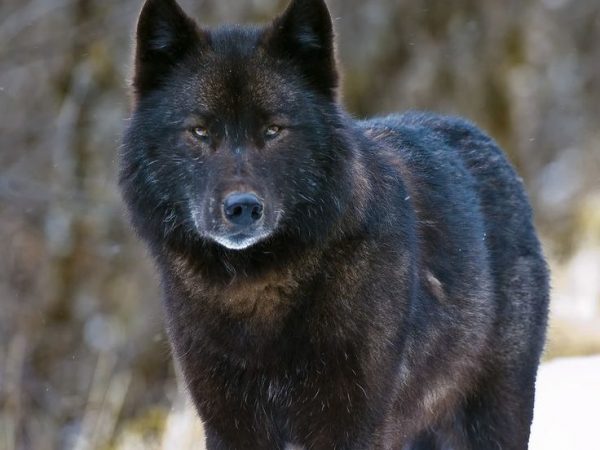
A notice published Tuesday in the federal register found merit to a conservationist coalition’s 111-page petition requesting Southeast Alaska’s wolves be listed as threatened or endangered. The petition cited logging and road development, illegal and legal trapping and hunting, the effects of climate change and loss of genetic diversity as factors threatening the wolves of the Alexander Archipelago.
U.S. Fish and Wildlife spokeswoman Andrea Medeiros said fact-finding by her agency isn’t likely to affect game management in the near-term.
“It had substantial information to warrant us looking further at the species, and whether it is warranted for listing or not,” she told CoastAlaska.
The agency declined to list the species as threatened or endangered under the Endangered Species Act in 2016.
But the federal agency did say threats to regional wolf populations from clear-cuts, aggressive hunting and trapping, and climate change as alleged in last year’s petition, have worsened since the last request filed a decade ago.
“Many of the threats identified in the 2020 petition are similar to threats presented in the 2011 petition,” the agency said in a statement. “However, the magnitude of the threats has increased.”
The federal government’s action will reignite a long-running controversy among Prince of Wales Island’s resident hunters and trappers, who complain of a steep drop-off in the island’s deer population, commonly blamed on wolf predation.
Sitka conservationist Larry Edwards is with Alaska Rainforest Defenders, one of the co-authors of the petition. He said the legacy of clear-cuts is to blame for the loss of deer herds, not predators.
“The difficulty with deer on Prince of Wales Island, at heart, goes back to habitat loss,” he said. “Which is cumulative over time from the logging of old growth forest and just the huge loss of that on that island.”
He said common sightings of wolves on Prince of Wales Island aren’t sound science, and shouldn’t be used to stop protections from going through.
“That’s anecdotal information,” he said. “There are definitely threats to this population.”
Some 68 wolves were killed during the 21 day 2020 hunting season. The year before, a record 165 wolves were taken by hunters and trappers after state and federal managers lifted quotas for hunters and trappers on and around Prince of Wales Island.
Alaska Department of Fish and Game Commissioner Doug Vincent-Lang said Prince of Wales Island’s wolf population is far from threatened.
“We don’t think that harvest represents a threat to this population, now or in the immediate future,” he said in a phone interview. “We think we have enough controls in place to be able to manage that population for sustainability.”
He echoed concerns from island residents that federal protections for wolves would allow unchecked predation on deer, a key food source.
“Many local communities really depend upon deer to get them through the winter,” Vincent-Lang said. “If wolves are listed by the U.S. Fish and Wildlife Service, the taking of wolves in directed hunting would be prohibited.”
Federal wildlife scientists are expected to release additional findings later this year.
The annual hunting and trapping season traditionally runs in the winter. A lawsuit filed on behalf of a conservationist earlier this year failed to halt last year’s season.
That case is scheduled to go to trial next spring.
Jacob Resneck is CoastAlaska's regional news director in Juneau.




